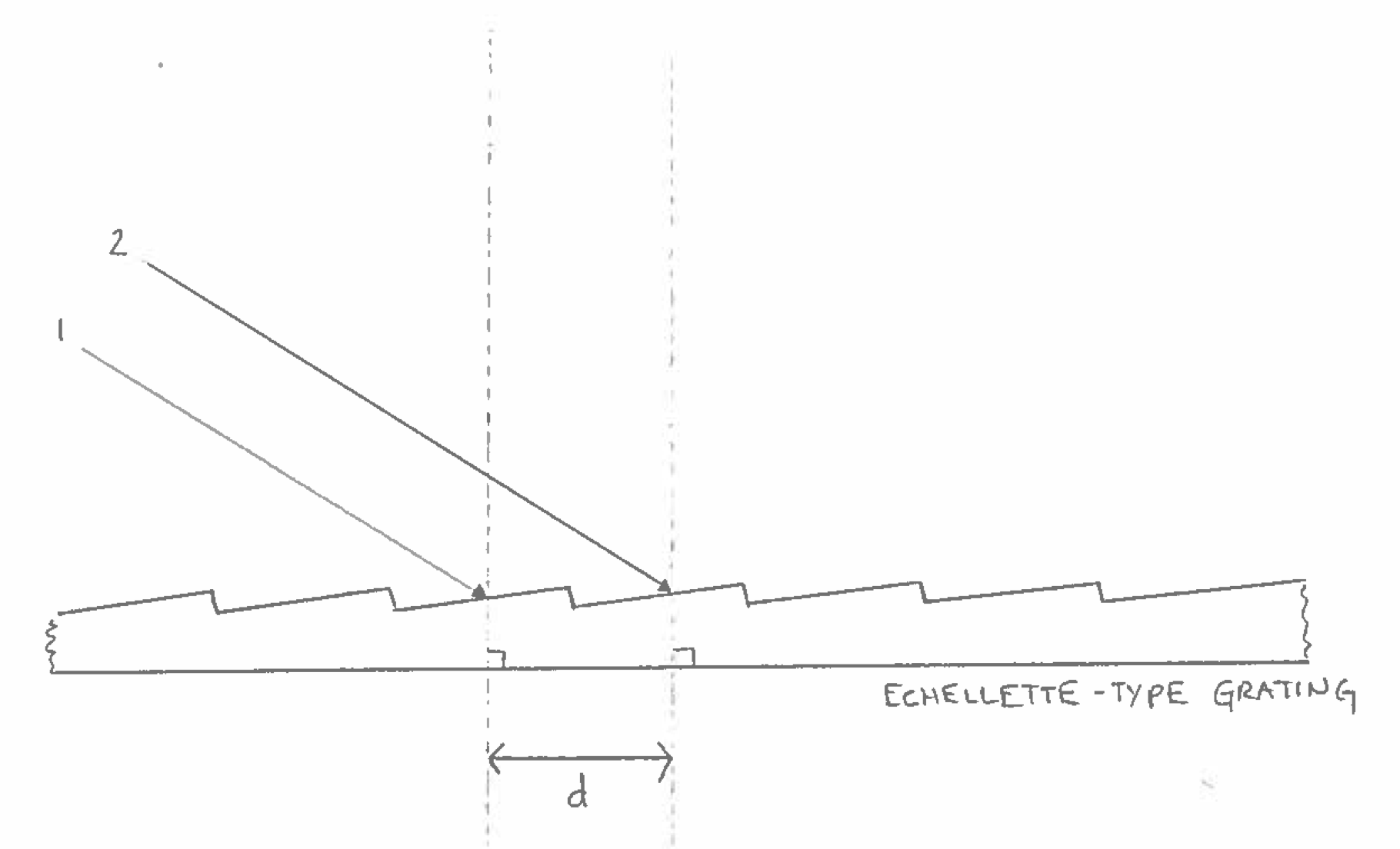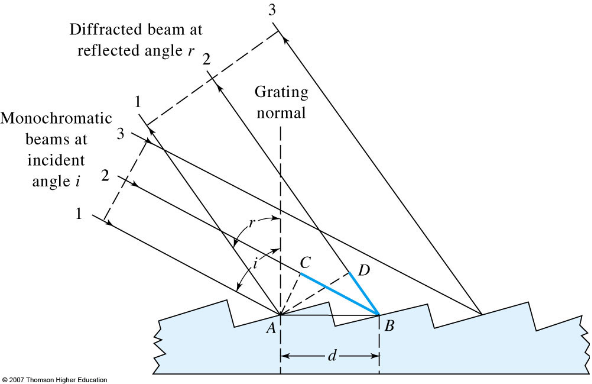Echellette Grating (Griffith)
( \newcommand{\kernel}{\mathrm{null}\,}\)
In-Class Exercise
CHEM341. Instrumental Analysis
Echellette-Type Reflective Diffraction Grating:
Consider the close-up view of an Echellette grating shown below. Imagine two incoming beams of radiation that are parallel and have the same wavelength (monochromatic). [Note: this ignores all of the other wavelengths of light that are hitting the diffraction grating.] If the distance between blazes (d) is on the order of the wavelength of light hitting the grating, then we can assume that beams 1 and 2 reflect as “point sources” (see two-point source wave tank video).

Draw the reflection of each beam as a wave front (not a beam) emerging from a point source.
Where will the reflected waves interfere constructively?
On the diagram below, draw the diffracted beams for 1 and 2. The diffracted beams will follow the locations of maximum constructive interference, and will define a diffraction angle that is specific to the wavelength of the incoming light.


From: Principles of Instrumental Analysis, 6th Edition, D.A. Skoog, F.J. Holler, S.R. Crouch, 2007, Thomson Brooks/Cole
Contributors and Attributions
- David Griffith, Willamette University (dgriffit@willamette.edu)
- Sourced from the Analytical Sciences Digital Library


